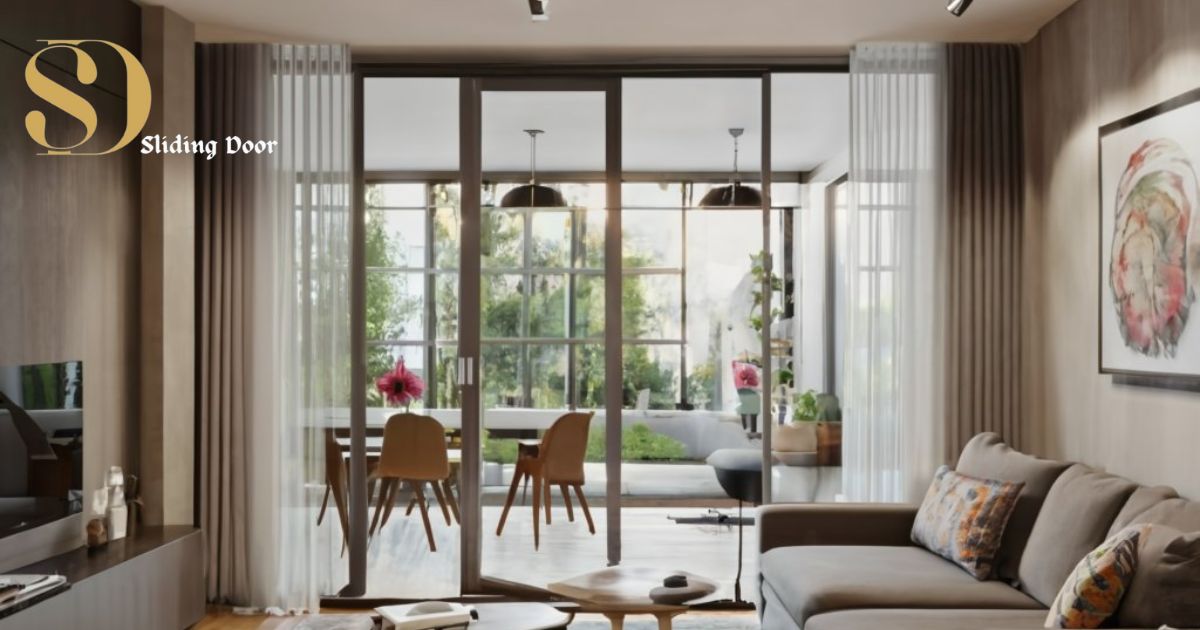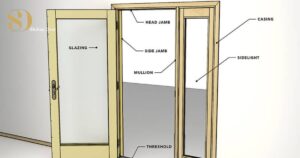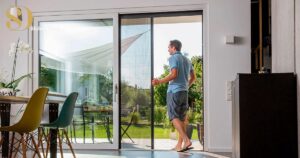Arranging a room with sliding doors involves positioning furniture to allow easy door access. Ensure that the sliding doors can open and close without obstruction. Optimize space by placing furniture along walls and leaving a clear path for smooth door functionality.
Unlock the secrets of seamless space with How To Arrange A Room With Sliding Doors. Discover the art of efficient placement making every corner count. Elevate your living space effortlessly opening doors to a harmonious room arrangement.
This includes moving furniture out of the way of the door for smooth movement in arranging the room. Keep a clear space near the doors to ensure easy access and functionality. Choose space-saving furniture to improve the layout of the room. Consider the direction of the door opening when placing large items. Choose a balanced and structured setup for a visually appealing and functional space.
11 Ways To Arrange A Room With Sliding Doors:
1. Make Space for Access
Creating room access space is crucial for both functionality and aesthetics. This involves thoughtful furniture placement, ensuring that doors, especially sliding ones, have unobstructed paths. By designing a layout that prioritizes easy movement and avoids clutter, one can enhance the overall accessibility and efficiency of the space, making it practical and visually appealing.
In addition to physical access, visual access is equally important in room arrangement. Balancing furniture and maintaining an open feel near access points, such as doors, contributes to a sense of spaciousness and ease of navigation. Whether it’s a bedroom, living room, or office the effective organization of space for access enhances the overall usability and comfort of the room.
2. Sliding glass door from ceiling to floor
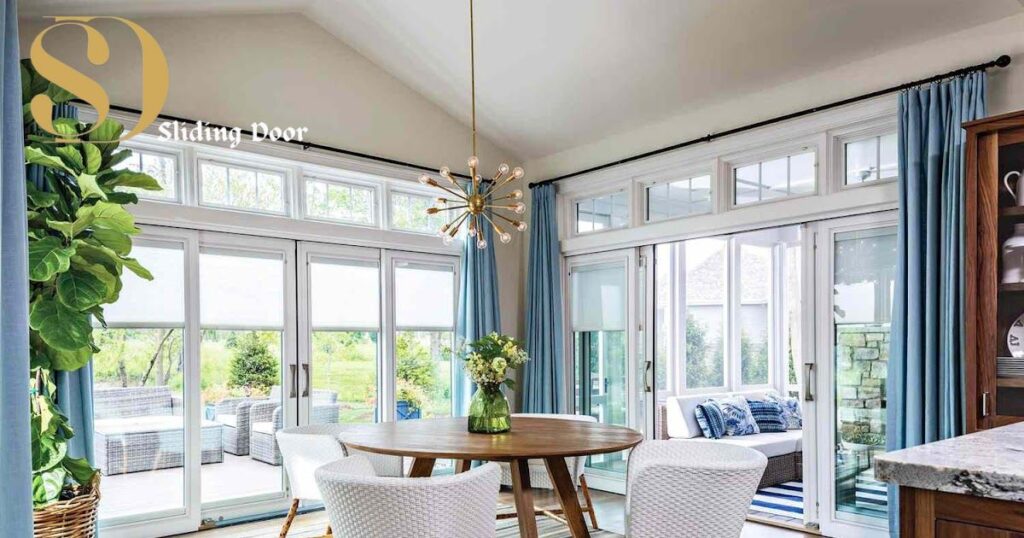
It is a modern and sleek design choice, emphasizing the seamless connection between indoor and outdoor spaces. This expansive glass feature not only floods the interior with natural light but also offers uninterrupted panoramic views, adding sophistication to the overall aesthetic.
It promotes a sense of spaciousness, making the room feel larger and open. This architectural element is not only functional but also contributes to a contemporary and airy atmosphere, which adds to the overall atmosphere, of the space.
3. Make Doors a Centre of Attention
This process involves adding design elements that draw attention to them, such as bold colors, unique textures, or distinctive hardware. By emphasizing the doors, whether through contrast or stand-out features, one can enhance their visual impact and make them beautiful. focal point within the overall design of the room.
Strategic placement of furniture and thoughtful lighting can further emphasize the doors, creating an intentional flow that draws attention to them. Consider the design of the door, whether it’s sliding, hinged, or sliding. Be it a value, or a decorative door allows for deliberate integration into the aesthetics of a room. The centerpiece of doors adds character to a space.
4. Use doors to create room separation
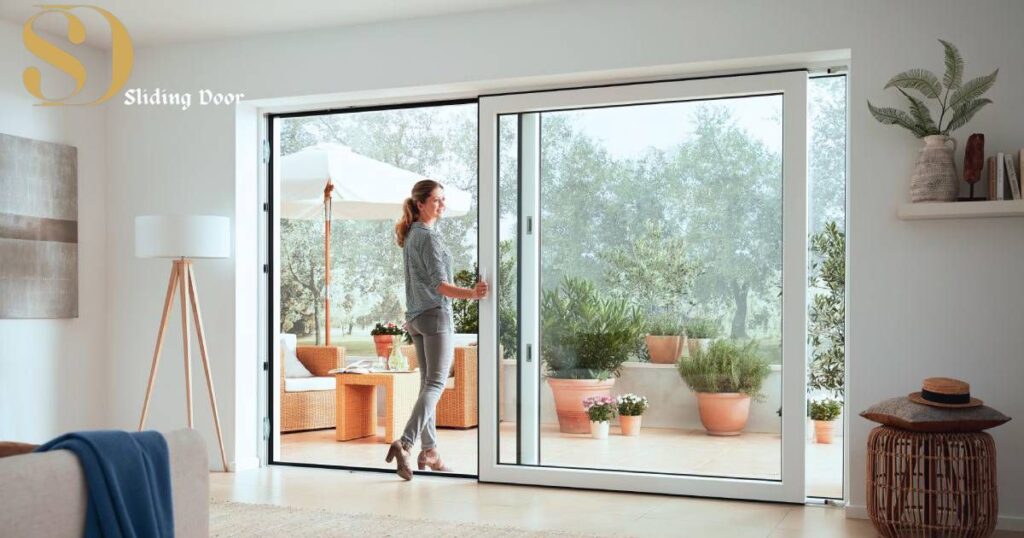
This strategy includes incorporating them as functional dividers, enhancing privacy, and defining separate living spaces.
Whether it uses sliding, folding, or traditional doors, this approach allows for flexible room layouts while maintaining a cohesive design.
By choosing doors that complement the overall aesthetic and incorporating them into the layout, one can transition seamlessly between open and closed spaces.
The design strategy not only improves the functionality of the room but also adds an architectural element that contributes to the overall visual appeal.
5. De-emphasize Doors
- Keep furniture away from doors.
- Arrange a room to hide doors.
- Use curtains to cover doors.
- Focus on other room features.
- Place decor away from doors.
- Opt for neutral colors near doors.
- Keep doors simple and plain.
- Create a cozy corner away from doors.
- Use rugs to distract from doors.
- Arrange seating away from doors.
6. Sliding Glass Door with Private Lounge Area and Bamboo Gate
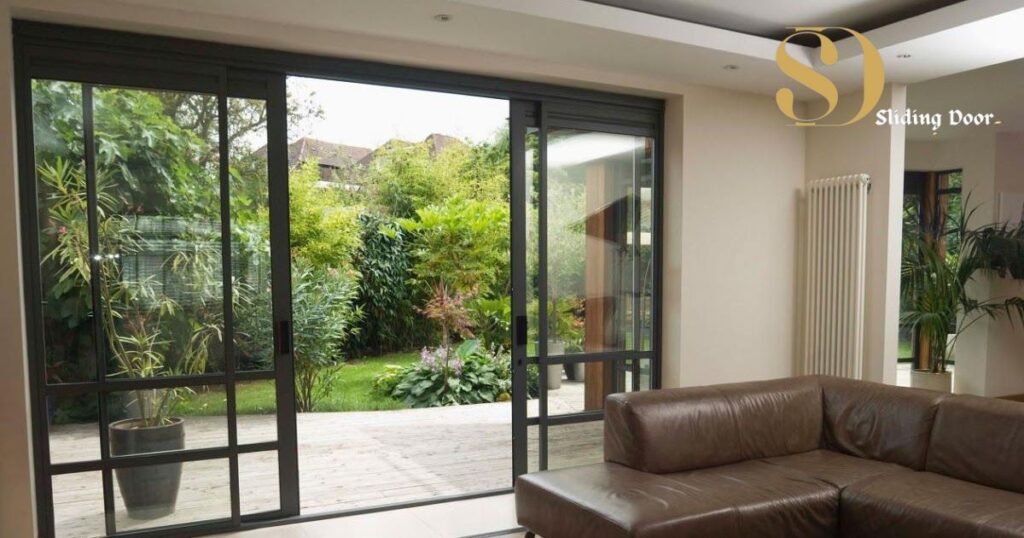
In a tranquil corner of the house, a sliding glass door opens up to reveal a private lounge area adorned with plush cushions and soft ambient lighting. The seamless transition from indoors to outdoors invites a sense of relaxation and calm.
The glass door frames a picturesque view of a lush bamboo gate, creating a harmonious connection with nature. Stepping into the lounge, one finds a serene escape, where the gentle rustle of bamboo leaves adds a soothing soundtrack to moments of quiet contemplation or friendly gatherings.
The sliding glass door not only defines the boundary between the private sanctuary and the outside world but also serves as a portal to an inviting space where comfort and nature gracefully converge.
7. Sliding Glass Door with Well-Maintained Lawns
A sliding glass door introduces a seamless connection between the interior and well-maintained lawns, blending the boundaries between indoor comfort and outdoor tranquility. The expansive glass pane serves as a visual gateway to the lush greenery, allowing natural light to flood the living space.
The well-manicured lawns, visible through the door, become an extension of the room’s ambiance, creating a refreshing and inviting atmosphere. Whether enjoying a quiet moment indoors or stepping out to bask in the open air, the sliding glass door with well-maintained lawns adds a touch of nature’s beauty to the living experience.
8 . Furniture in front of sliding glass doors
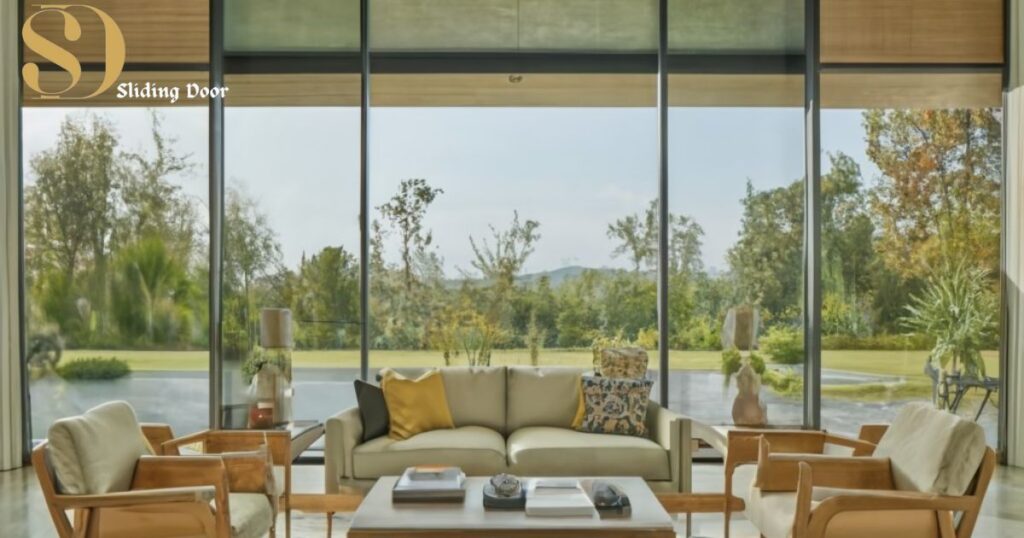
Placing furniture in a space can be a delicate balancing act, where accessibility and aesthetics are harmonious. Choose low-profile or modular pieces to maintain an open and unobstructed view through doors, while ensuring a smooth transition between indoor and outdoor spaces. Consider dual-purpose furniture to combine functionality with style, such as storage benches or console tables, creating an inviting environment that serves the purpose of sliding glass doors.
Adding more transparent or light-colored pieces, along with strategically placed indoor plants, can improve the overall ambiance while bringing a sense of nature indoors without compromising the functionality of the door. Create a balance that not only complements your living room setting but also invites the beauty of your outdoor space into the heart of your home.
9. Use Mirrors to Enhance Space
Leverage mirrors strategically when arranging a room to enhance the sense of space and light. Position mirrors on walls opposite windows or sliding doors to reflect natural light and make the room appear larger. This simple yet effective technique can create an illusion of depth, brightening up the space and diminishing any feelings of confinement.
These mirrors contribute to the overall aesthetic by adding a touch of elegance and functionality. Consider different shapes and sizes to suit the room’s style while maximizing their impact on the perceived spaciousness of the area.
10. Consider Privacy
When arranging a room, it’s essential to carefully consider privacy, especially if you have sliding doors or windows. Choose window treatments such as curtains or blinds that strike a balance between allowing natural light in and providing necessary privacy. Position furniture with privacy in mind, ensuring that seating areas are not directly exposed to prying eyes from outside.
If the room requires separation into distinct zones, use screens or room dividers to maintain a sense of privacy without compromising the overall design. Thoughtful consideration of privacy ensures that the room remains a comfortable and secure space for its occupants.
11. Create Zones
Establishing distinct zones within a room is a strategic approach to effective arrangement. By creating designated areas for specific activities or functions, you enhance both organization and visual appeal. For example, in a living room, delineate zones for conversation, entertainment, and relaxation by arranging furniture accordingly.
Use area rugs, lighting, or subtle changes in furniture placement to define these zones clearly. This not only contributes to a well-organized and purposeful layout but also adds a sense of order and coherence to the overall design of the room.
Frequently Asked Questions
Can you put furniture in front of sliding glass doors?
Yes, you can put furniture in front of sliding glass doors, but ensure it doesn’t obstruct access.
Are sliding doors good for bedrooms?
Yes, sliding doors can be good for bedrooms, offering space efficiency and natural light.
How much space do you need between sliding doors?
Maintain at least 18 inches of space between sliding doors for ease of movement.
How do you arrange furniture in a living room TV?
Arrange furniture in a living room with the TV by creating a seating arrangement facing the TV, ensuring comfortable viewing.
Should you put curtains over sliding doors?
Yes, curtains can be placed over sliding doors for privacy and light control.
Final Thoughts
Furnishing a room with sliding doors requires thoughtful and strategic planning. First, use sliding doors to optimize space, making sure they don’t obstruct furniture or traffic flow. Secondly, choose furniture with a sleek and compact design to complement the sliding doors to create a harmonious and functional layout.
In summary, achieving a pleasing and functional layout involves balancing furniture placement with sliding doors. Keep in mind the importance of creating a sense of openness and accessibility, allowing the room to feel spacious and well-organized. By following these simple guidelines, you can transform your space into a stylish and efficiently organized area with the convenience of sliding doors.

For 8 years, I’ve been working with sliding doors. I know all the ins and outs, from how they’re designed to how they work. I’m here to share my expertise.
